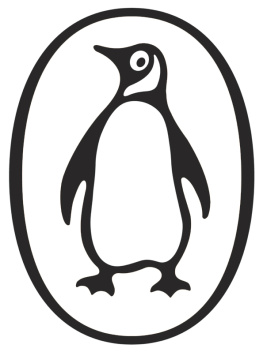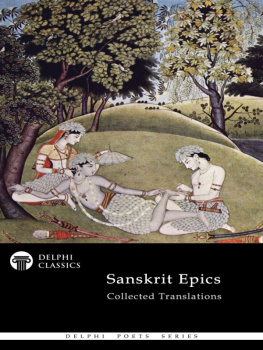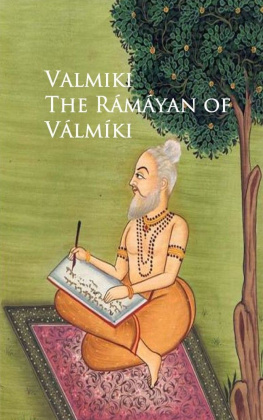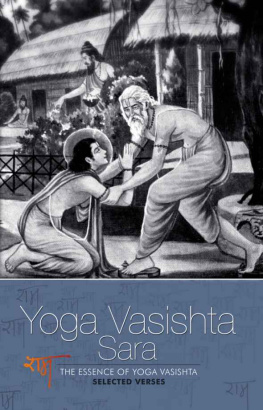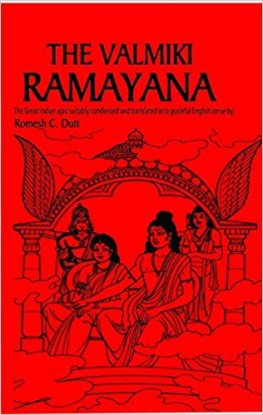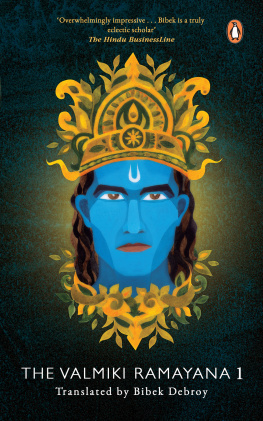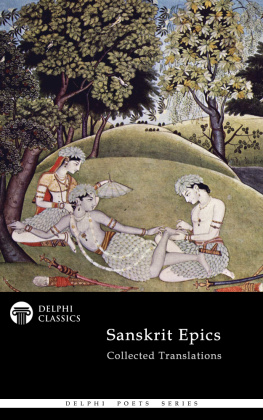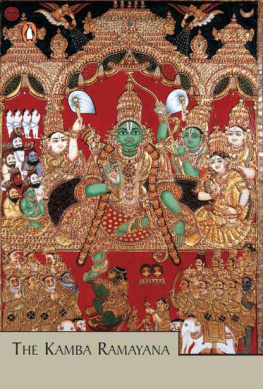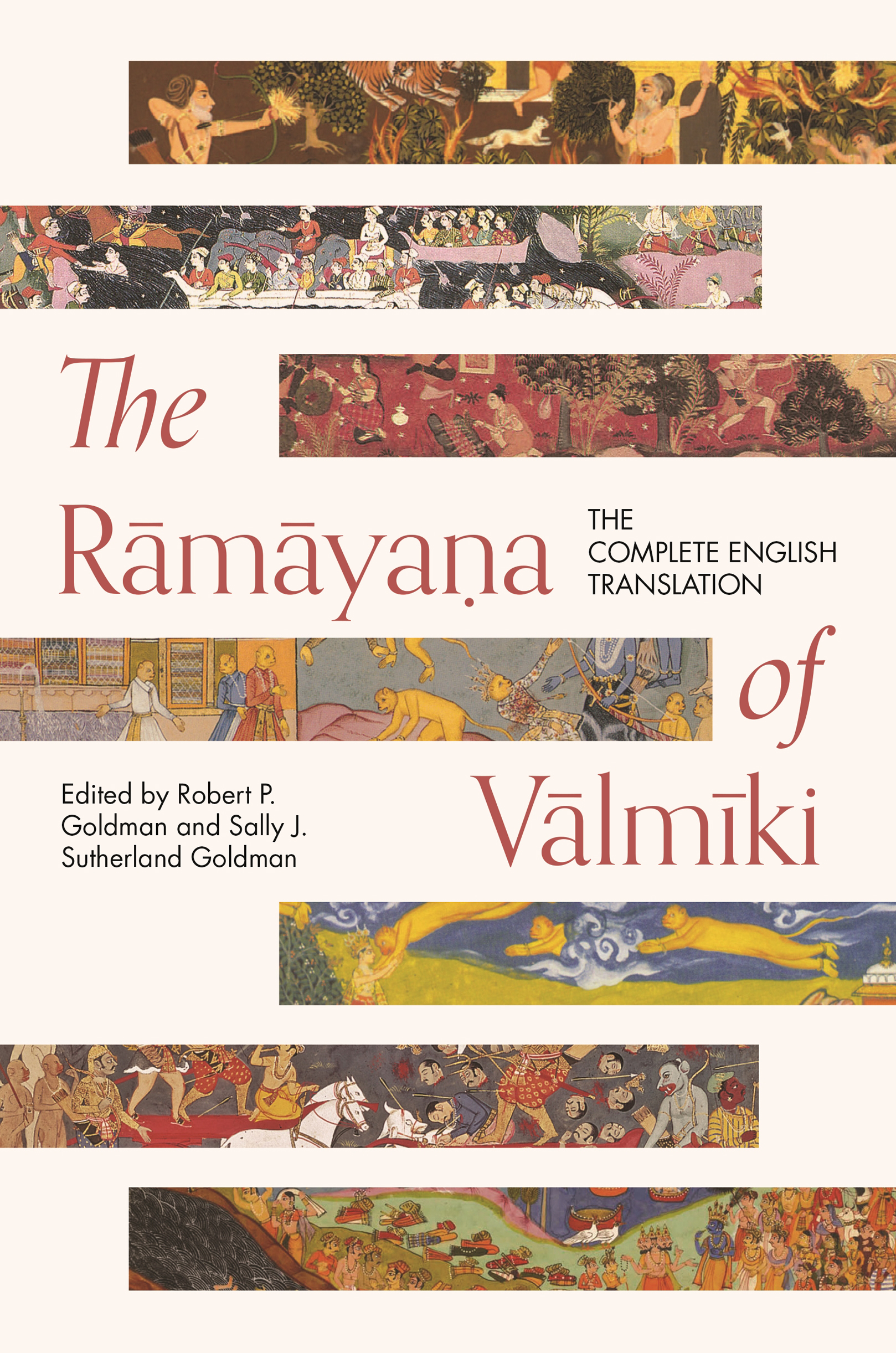THE RMYAA OF VLMKI
THE RMYAA OF VLMKI
The Complete English Translation
Translated by Robert P. Goldman, Sally J. Sutherland Goldman, Rosalind Lefeber, Sheldon I. Pollock, and Barend A. van Nooten
Revised and Edited by Robert P. Goldman and Sally J. Sutherland Goldman
PRINCETON LIBRARY OF ASIAN TRANSLATIONS
PRINCETON UNIVERSITY PRESS
PRINCETON AND OXFORD
Copyright 2021 by Princeton University Press
Princeton University Press is committed to the protection of copyright and the intellectual property our authors entrust to us. Copyright promotes the progress and integrity of knowledge. Thank you for supporting free speech and the global exchange of ideas by purchasing an authorized edition of this book. If you wish to reproduce or distribute any part of it in any form, please obtain permission.
Requests for permission to reproduce material from this work should be sent to
Published by Princeton University Press
41 William Street, Princeton, New Jersey 08540
6 Oxford Street, Woodstock, Oxfordshire OX20 1TR
press.princeton.edu
All Rights Reserved
Names: Vlmki. | Goldman, Robert P., 1942 translator. | Sutherland Goldman, Sally J., translator. | Lefeber, Rosalind, translator. | Pollock, Sheldon I., translator. | Nooten, Barend A. van, 1932 translator.
Title: The Rmyaa of Vlmki : the complete translation / translated by Robert P. Goldman, Sally J. Sutherland Goldman, Rosalind Lefeber, Sheldon I. Pollock, and Barend A. van Nooten ; revised and edited by Robert P. Goldman and Sally J. Sutherland Goldman.
Other titles: Rmyaa. English
Description: 1st. | Princeton : Princeton University Press, 2021. | Series: Princeton library of Asian translations | Includes bibliographical references and index.
Identifiers: LCCN 2021009370 (print) | LCCN 2021009371 (ebook) | ISBN 9780691206868 (paperback) | ISBN 9780691225029 (ebook)
Classification: LCC BL1139.22 .E54 2021 (print) | LCC BL1139.22 (ebook) | DDC 294.5/92204521dc23
LC record available at https://lccn.loc.gov/2021009370
LC ebook record available at https://lccn.loc.gov/2021009371
Version 1.0
British Library Cataloging-in-Publication Data is available
Editorial: Anne Savarese and James Collier
Production Editorial: Sara Lerner
Text Design: Carmina Alvarez
Cover Design: Layla MacRory
Production: Erin Suydam
Publicity: Kate Hensley and Amy Stewart
Copyeditor: Cynthia Buck
Cover images: British Library / GRANGER
For all of thosecolleagues, students, family, and friends without whose support and assistance the massive Rmyaa translation project could not have been completed
yvat sthsyanti giraya sarita ca mahtale /
tvad rmyaakath lokeu pracariyati //
The Vlmki Rmyaa: Critical Edition, 19601975, 1.2.35
As long as the mountains and rivers shall endure upon the earth,
So long will the tale of the Rmyaa be told among the people.
Contents
- xi
- xiii
Preface
The current volume, edited and revised by the general and associate editors of the original translation project, represents the complete text of the original Princeton University Press seven-volume translation of the Oriental Institute of Baroda critical edition of the Rmyaa of Vlmki. That translation, accompanied by extensive introductions and a dense scholarly annotation, was published serially as the flagship work in the Princeton Library of Asian Translations from 1984 to 2017.
The present volume, which includes a new general introduction and eliminates the originals extensive annotation, is intended for two audiences: the general reading public, who may be interested in gaining access to a little-known masterpiece of Asian literature, and high school and collegiate students and faculty. As discussed in detail in the introduction, the original translation, directed more toward an audience of academic specialists, has been considerably revised by Professors Goldman and Sutherland Goldman with a view toward making it more accessible to these two audiences.
Over the decades during which the original translation took form and during the period of the creation of the present one, the editors and translators incurred an immense debt of gratitude to many scholars in India and at Berkeley for their assistance. Space prevents us from naming them here, but they have been deeply thanked in the original volumes. Let us simply express our undying gratitude to Sanskrit scholar Dr. Kristi Wiley, who, through both avatras of the translation, has been unstinting in her help and unequaled in her eagle eye and good sense of the original text, without which neither form would have been possible. We would also like to express our profound thanks to Ms. Janet Um for lending her knowledge of Sanskrit to and her meticulous proofreading of the final versions of the volume.
All references are to The Vlmki Rmyaa: Critical Edition, 19601975.
Guide to Sanskrit Pronunciation
To better appreciate the Rmyaa, it will be helpful for readers to have a sense of the pronunciation and prosody of the many unfamiliar Sanskrit names and terms they will find in the translation. Fortunately, although it may seem daunting at first, the pronunciation of Sanskrit is really not very difficult for English speakers. A few guidelines will serve to clarify the basic pronunciation of the sounds. English examples are based on hypothetical dictionary pronunciation.
Vowels
a | like the u in but |
|---|
like the o in mom |
i | like the i in bit |
like the ee in beet |
u | like the first u in suture |
like the oo in pool |
like the ri in rig |
e | like the a in gate |
ai | somewhat like the i in high; this sound becomes a diphthong to glide slightly into the i vowel |
o | like the o in rote |
au | somewhat like the ou of loud with a similar lip-rounding glide |
Consonants
k | like the k in skate |
|---|
kh | like the k in Kate |
g | like the g in gate |
gh | somewhat like the gh in doghouse |
n | like the n in sing |
c | like the c in eschew |
ch | like the ch in chew |
j | like the j in jewel |
jh | like the dgeh in hedgehog |
like the n in cinch |
like the first t in start |
h | like the first t in tart |
like the d in dart |
h | like the dh in adhere |
like the n in tint |
t | this sound and the five following sounds are articulated like the five preceding sounds but with the tip of the tongue touching or extending slightly between the teeth |


